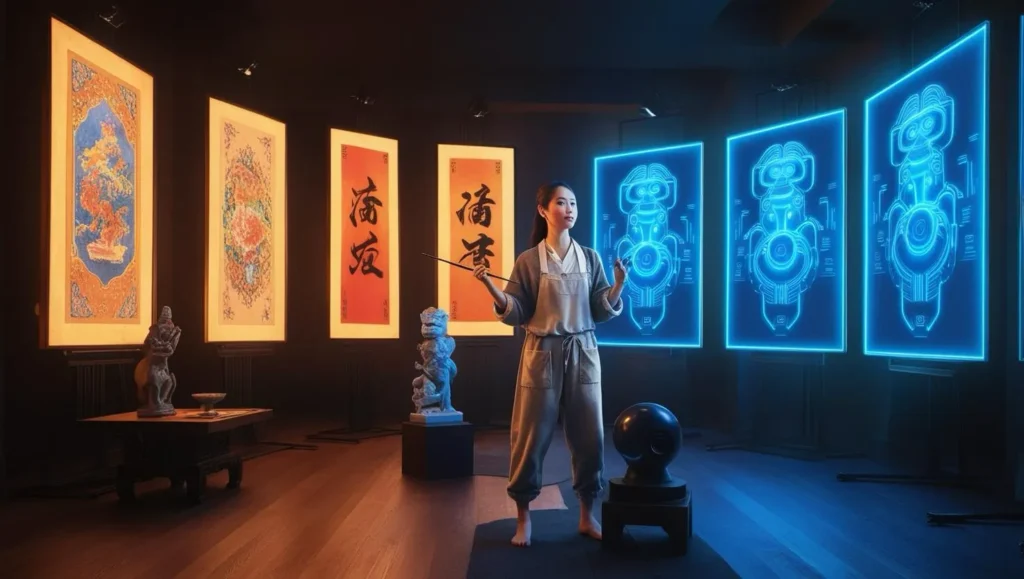Artificial intelligence (AI) does not merely shape the contemporary digital world; it transforms it into a battleground where hegemony and resistance coexist. Under the guise of innovation, AI alternately reinforces globally unequal power structures or emerges as an ally of creative movements challenging these dynamics. Its role is, therefore, deeply ambiguous and riddled with contradictions.
AI in Digital Colonialism
Data extraction and control
AI is often used to extract and control user data, frequently without explicit consent. Communication networks managed by Western corporations expand economic and cultural domination, centralizing control over software, hardware, and connectivity.
Digital infrastructures
Foreign technology companies, predominantly American, implement infrastructures in the Global South designed to serve their own interests. This imposed dependency results in privatized forms of digital governance, exacerbating inequalities.
Algorithmic governance
AI enables new modes of “algorithmic governance,” which influence people’s lives by manipulating their subjectivities. It also facilitates tracking and analyzing digital behaviors, alienating individuals from the data they generate.
Technological dominance
The centrality of AI in technological advancement deepens digital dependency, often creating a crisis of cultural values. AI promotes a digital universalism, where representations are applied indiscriminately, generating a “colonial impulse” that suppresses diversity.
Cognitive violence
By distorting traditional art forms and marginalizing Indigenous cultures, AI can perpetuate cognitive violence. The imposition of dominant cultural standards erases local expressions and fosters cultural homogenization.
AI in Artistic Creation
Image generation
Tools like DALL-E enable the creation of digital content based on keywords. However, these models are based on “data” and “code” that often reflect digital universalism and carry traces of colonial impulses.
New forms of expression
AI redefines concepts of authorship and originality, creating new opportunities for artistic expression. This technology expands creative boundaries but also raises questions about the human role in creation.
Critique and resistance
Artists use AI as a tool to critique power structures, challenge colonial narratives, and create works that promote social justice. Technology becomes a medium for exploring complex social dynamics and resisting cultural hegemony.
Collaboration
By enabling interactions between humans and non-human systems, AI facilitates innovative artistic collaborations. This approach expands our understanding of subjectivity and agency in art.
Challenges
Despite its creative potential, AI is not neutral. It embeds ideologies that can reproduce inequalities and cultural appropriation, especially when creators use elements of marginalized cultures without understanding or respecting their origins.
Art Education and AI
Critical formation
Art education should foster a critical understanding of AI and its cultural, social, and political implications. This includes exploring how technology perpetuates inequalities and how it can be leveraged to confront them.
Alternative uses of technology
Educational initiatives should empower individuals to critique algorithmic norms, promoting the creation of digital infrastructures that respect rights and advance social justice.
Cultural empathy
Educational programs can help promote cultural empathy by examining how colonial narratives are transmitted through digital media. Themes like “post-digital” and “post-internet” should be explored to question their influences in the cultural context.
Conclusion
At the heart of the tensions between creation and control, AI emerges as a paradoxical actor. It can both be used to perpetuate hegemonic dynamics and open new doors to resistance and creativity. In the field of art education, it is essential to embrace this ambiguity consciously, promoting the use of technology as a means to create more diverse and equitable futures.
Victor T. Murari
Art History, Education & Artificial Intelligence | PhD | Advancing Educational and Cultural Narratives through AI Integration

